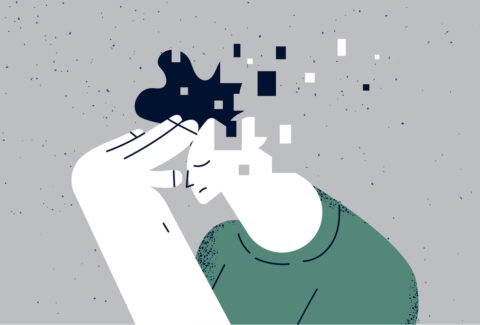Supertherapists and the Trolley Problem

Supertherapists and the Trolley Problem
The Trolley Problem[1] can help us brainstorm on decision-making in ethics in mental health. It was first invented by Philippa Foot[2], over half a century ago, in 1967. Since then, a series of experts have built upon it through different scenarios to test moral intuitions for those specialized in ethics, for the general public, and for professionals in fields like ours.
While there are several iterations of the Trolley Problem, the most basic is as follows:
A driver loses control of his trolley. There are 5 people tied to the track and they are going to be killed. The driver has the option to divert the trolley to an alternate track where only one person is tied. That would then result in one person being killed versus five.
What would you do if you were the driver?
Would you continue on the track where 5 people would be killed?
Or, would you divert the trolley to the alternative track where one person would be killed?
To answer this question, we will use a point of reference, which for us consists of the four pillars of medical ethics, known as the Four Main Principles:
- Non-maleficence – which is to do no harm[3]
- Beneficence- which means doing what is in the patient’s best interest[4]
- Autonomy – means respecting the patient’s choice[5]
- Justice – means equity and fairness
Inquiries:
- Are these four main principles all created equal?
- Is one ever more important than the others?
- If so, which one?
First “Do No Harm” may be one of the most common phrases in medicine, at large, and in mental health, in particular. And, this may be another way to introduce the primacy of the principle of non-maleficence. This means, under usual circumstances, the principle of nonmaleficence tends to prevail over the other thee. Simply put, when dealing with ethical dilemmas, relying on the primacy of the non-maleficence principle may be a safe rule of thumb.
Yet, is it that simple? Is it that straightforward? How does that really play itself in practice?
The Trolley Problem with its varying scenarios shows us that ethical decisions are not always clear-cut. This is because it depends on which theory is being used to look at the dilemma.
There are three major approaches to ethics to which several major ethical theories relate:
- Virtue Theory which is treating concepts of moral virtue as central[6]
- Consequentialism treats the concept of goodness of outcomes of an action as central[7]
- Deontology makes the concept of moral duty central[8]
From these three major approaches, the following theories derive and are very relevant to the work we do as Supertherapists. We have:
- Kantian principles, which are related to Deontology
- Utilitarianism, which is related to Consequentiality
- The doctrine of double effect, which is related to Virtue Theory; and
- Contemporary virtue ethics, which is related to Virtue Theory
In subsequent articles, we are going to elaborate on the above aspects of ethics in mental health. This is because operating from principles is one of the secrets of Supertherapists.
While waiting for the next article on this series, we invite you to join us for our Ethics, Law, and Mental Health Series, which started on Friday, May 5th, and runs every week.
We also invite you to register for one or more of our 19 special series at SWEET. These series are designed to give you the skills you need in each and every single area of mental health:
- Neuroanatomy Made Simple
- Business Skills for Clinicians
- Speed Reading for Clinicians
- Schema Therapy for Clinicians
- Medical First Aid for Clinicians
- Philosophy and Mental Health
- Public Speaking for Clinicians
- Super Memory Skills for Clinicians
- Geriatric Mental Health
- Addiction Mental Health
- Basic Biostatistics for Clinicians
- Writing Skills for Clinicians
- Ethics, Law, and Mental Health
- Basic Neurology for Clinicians
- Optimal Aging
- Child & Adolescent Mental Health
- Spiritual Tools for Clinicians
- Research Skills for Clinicians
[1] Thomson, Judith Jarvis. The Trolley Problem. The Yale Law Journal, vol. 94, no. 6, 1985, pp. 1395–415. JSTOR, https://doi.org/10.2307/796133. Accessed 4 May 2023.
[2] Wikimedia Foundation. (2023, February 10). Philippa Foot. Wikipedia. Retrieved May 4, 2023, from https://en.wikipedia.org/wiki/Philippa_Foot
[3] Andersson, Gunnar BJ, et al. “Do no harm: the balance of beneficence and non-maleficence.”Spine 35.9S (2010): S2-S8.
[4] Pellegrino, Edmund D. “For the patient’s good: The restoration of beneficence in health care.” (1988).
[5] Deci, Edward L., and Richard M. Ryan. “The support of autonomy and the control of behavior.” Journal of personality and social psychology 53.6 (1987): 1024.
[6] Statman, Daniel. “Introduction to virtue ethics.”Virtue ethics: A critical reader” (1997): 1-41.
[7] Driver, Julia. Consequentialism. Routledge, 2011.
[8] Paquette, Michael, Erich J. Sommerfeldt, and Michael L. Kent. “Do the ends justify the means? Dialogue, development communication, and deontological ethics.” Public Relations Review 41.1 (2015): 30-39.






